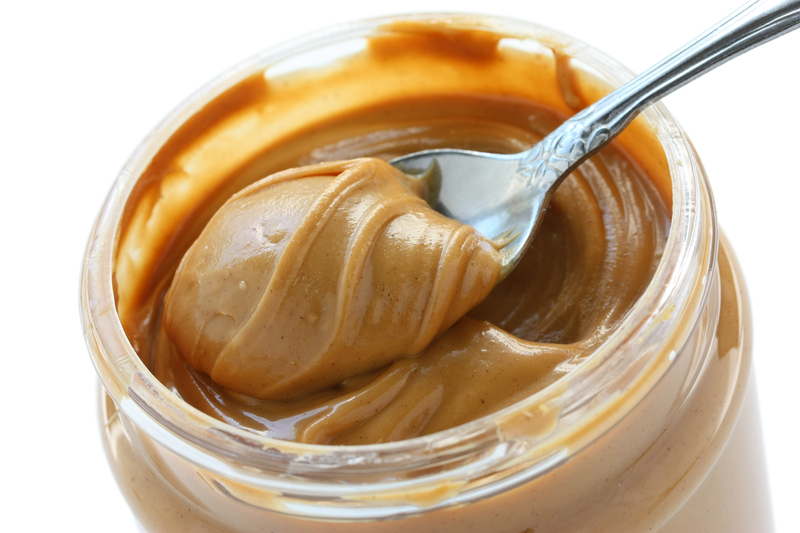Conquer Grease: Your Go-To Guide for Cleaning Enamel Oven Trays with Ease
Whether you're a seasoned chef or a weekend baker, one kitchen task everyone dreads is dealing with stubborn grease and grime on enamel oven trays. Over time, residues can build up, leaving your trays with stubborn stains and burnt-on food that seem impossible to remove. But fear not--this comprehensive guide will teach you how to clean enamel oven trays easily and effectively, restoring them to their original shine!
Why Is Cleaning Enamel Oven Trays So Important?
If you're passionate about cooking, maintaining spotless enamel oven trays is about more than just aesthetics:
- Prolongs the life of your oven trays by preventing corrosion and wear.
- Ensures food safety and hygiene by removing potentially harmful residues.
- Helps maintain optimal cooking performance and taste by removing burnt and old flavors.
And of course, a sparkling tray makes every baking session more enjoyable!

Understanding Enamel Oven Trays: What Makes Them Special?
Enamel oven trays are popular in many kitchens due to their durability, non-stick properties, and ability to withstand high temperatures. Unlike bare metal, enamel-coated oven trays have a hard, smooth surface that resists rust and scratches, making them ideal for everyday use. But while they're tough, improper cleaning can still damage the surface--so knowing the right techniques is crucial.
Best Practices: General Tips for Cleaning Enamel Oven Trays
- Act Quickly: The sooner you clean after use, the easier it is to remove grease and baked-on foods.
- Avoid Abrasives: Do not use steel wool or harsh scouring pads, as they can scratch the enamel coating.
- Avoid Extreme Temperature Shocks: Never immerse a hot tray in cold water, as this can cause the enamel to crack or chip.
- Use Soft Sponges: Always opt for non-scratch sponges or microfiber cloths.
With these basics in mind, let's walk through the step-by-step methods to clean enamel oven trays and remove burnt-on grease with ease.
Step-By-Step: How to Clean Greasy Enamel Oven Trays
1. Basic Cleaning: For Light Grease and Stains
- Allow the tray to cool completely after use.
- Fill your sink or a large basin with warm, soapy water (use mild dish soap).
- Immerse the enamel tray and let it soak for at least 15-30 minutes.
- Use a soft sponge to gently scrub away any residue.
- Rinse thoroughly with clean water and dry with a soft towel or allow to air dry.
2. Deep Cleaning: For Tough, Baked-On Grease
- Step 1: Make a Cleaning Paste
Mix baking soda and a small amount of water to form a thick paste. -
Step 2: Apply and Let Sit
Spread the paste over the greasy or burnt areas of the tray and allow it to sit for at least 30 minutes (overnight for severe stains). -
Step 3: Gentle Scrub
Using a non-abrasive sponge, gently scrub the area until the grease lifts away. -
Step 4: Vinegar Boost
Spray or drizzle some white vinegar onto the baking soda paste--this will fizz and help lift stubborn burnt-on residue. -
Step 5: Rinse and Dry
Rinse thoroughly with warm water and dry as usual.
3. Cleaning with Dishwasher Tablets
- Place the enamel oven tray in a sink or tub.
- Fill with enough hot water to fully submerge the tray.
- Drop one dishwasher tablet directly onto tough stains.
- Allow the tray to soak for 1-2 hours (overnight for heavy grime).
- Use a sponge to smooth away softened debris and rinse well.
This popular kitchen hack is especially effective for cleaning enamel-coated baking trays with persistent baked-on grease.
Natural, Eco-Friendly Ways to Clean Enamel Oven Trays
Prefer to avoid harsh chemicals? There are several natural cleaning alternatives that are both effective and safe for your cookware:
- Lemon Juice: The acidity of lemon helps cut through grease. Mix with baking soda for an extra scrub.
- White Vinegar: Combined with baking soda or used alone, vinegar breaks down fat and food residues.
- Salt: Acting as a gentle abrasive, salt helps dislodge stubborn bits without scratching enamel.
*Pro tip: A combination of hot water, baking soda, and lemon juice can swiftly loosen burnt spots, and the natural scent leaves your kitchen refreshed!
Common Mistakes to Avoid When Cleaning Enamel Oven Trays
- Never use metal utensils or scrapers that can chip the enamel coating.
- Don't use oven cleaners intended for bare metal as they may be too harsh for enamel surfaces.
- Avoid soaking for excessively long periods, especially with harsh chemicals.
- Do not stack wet trays--this can trap moisture and lead to damage over time.
How to Maintain Sparkling Enamel Oven Trays: Prevention Is Key!
To keep your enamel oven trays looking their best:
- Line trays with parchment paper or silicone baking mats to reduce direct contact with fatty/oily foods.
- Clean trays shortly after use--prevents grease from hardening.
- Store trays dry, away from pooling water or humidity.
- Perform regular checks for chips or cracks in the enamel coating.
Best Cleaning Products and Tools for Enamel Oven Tray Care
Although many supermarket cleaners are safe for enamel trays, always check the label for compatibility. Suitable products and tools include:
- Non-abrasive sponges and scrubbing pads
- Soft-bristled dish brushes
- Mild dish soap
- White vinegar or diluted lemon juice
- Baking soda or eco-friendly, non-toxic cleaning pastes
- Dishwasher tablets (for deep cleans)
DIY Enamel Tray Cleaner Recipe
- 2 tbsp baking soda
- 1 tbsp white vinegar
- 1 cup hot water
Mix to form a paste and let sit on the tray's surface for 30 minutes before rinsing off.
How Often Should You Clean Enamel Oven Trays?
As a rule of thumb, wipe or wash after every use. For heavy-duty cooks or bakers, deep clean your enamel oven trays at least once every 2-4 weeks, or whenever you notice a buildup of brown or black stains.
Frequently Asked Questions About Cleaning Enamel Oven Trays
Can I use a dishwasher for enamel oven trays?
Many enamel trays are technically dishwasher safe--but for long-lasting shine, regular handwashing is best. Avoid dishwashing if your tray has visible chips or cracks.
What if my enamel oven tray has burnt-on black marks?
Mix a thick baking soda and water paste, coat the burnt-on areas, and let sit overnight. Scrub with a soft sponge the next day for best results.
Can I use bleach on enamel trays?
Avoid using straight bleach: it's harsh and may discolor the enamel or damage the surface. Stick to gentle cleaners.
What if my enamel tray has a chip?
If the chip is small, you can continue to use the tray, but monitor it for rust or further damage. If a large section is chipped, consider replacing it, as the exposed metal is more vulnerable to corrosion.
Troubleshooting: What to Do If Stains Remain
If stubborn marks persist after cleaning, try one more cycle with a more concentrated baking soda-vinegar solution, or soak overnight with a dishwasher tablet as described above. It may take several rounds to fully remove burnt-on grease from enamel oven trays that haven't been cleaned in a while.
Bonus Tips: Cleaning Other Enamel Kitchenware
The techniques for oven trays also apply to cleaning other enamel cookware, such as dutch ovens, roasting dishes, and enamel-coated baking sheets. Always use gentle products and avoid sharp utensils to prolong their lifespan.

Conclusion: Keep Your Enamel Oven Trays Gleaming
Learning how to clean enamel oven trays is a simple process that can dramatically improve the performance and longevity of your kitchenware. By using gentle, effective methods, you'll easily conquer grease and enjoy spotless, hygienic trays--ready for your next culinary masterpiece.
Remember: Regular maintenance and prompt cleaning is all it takes to keep enamel oven trays sparkling like new!
Ready to Conquer Grease?
Next time grease tries to take over, you'll be armed with the best techniques and eco-friendly solutions for cleaning enamel oven trays with ease. For more kitchen cleaning wisdom, bookmark this guide and share your favorite oven tray cleaning tips in the comments below!